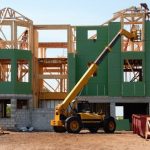
Getting a new roof is a major investment. It’s essential to know where your money is going when you decide to put that spiffy new cover over your head. This guide breaks down the various costs involved in roof installation, ensuring that you can plan accordingly and make an informed decision.
Material Costs: The Foundation of Your Roof
The first key component that defines roof installation costs is the material you choose. Roofing materials vary in price, durability, and aesthetic appeal. Here’s a basic breakdown:
-
Asphalt Shingles: These are the most common and affordable choice for many homeowners. They provide decent durability and come in a variety of styles and colors.
-
Metal Roofing: More costly than asphalt, metal roofs are known for their longevity and ability to withstand harsh weather conditions.
-
Clay Tiles: Often seen in Mediterranean-style homes, clay tiles are expensive but offer longevity and excellent insulation.
-
Slate: The priciest of the bunch, slate roofs are prestigious, durable, and long-lasting.
-
Wood Shakes: Wood shakes bring a rustic charm. They are moderately priced and require more maintenance than the other materials.
Labor Costs Paying for Expertise
No matter how thrilled you are about getting a new roof, it’s crucial to hire professionals to do the job. Labor costs can vary depending on the complexity of your roof design, local wage rates, and contractor reputation. Ensuring that you budget for skilled labor will make a significant difference in the outcome of your roof installation.
Permit Fees Legalities You Must Consider
Many areas require permits for roofing projects. Permit fees can vary based on your location and the size or scope of the job. It’s wise to check with local authorities to know what’s needed to avoid any surprises down the road.
Inspection and Removal Costs Clearing the Old to Make Way for the New
Before a new roof is installed, the old one usually has to be removed. This involves inspection costs to ensure there’s no underlying damage to the roof deck. If the old material needs to be removed, expect costs for labor and disposal of the debris.
Unexpected Repairs Costs Safety Nets for Surprises
When the old materials are stripped, hidden damages, such as water damage or rotting wood, might be revealed. These unexpected repairs can increase the total cost, so it’s advisable to set aside some funds for surprises during the roofing process.
Sometimes, after a big storm, homeowners discover they need a residential roof replacement due to extensive damage that couldn’t be predicted. Addressing these issues promptly is necessary to reduce long-term costs.
Cost of Hail Damage Repairs
Weather events like hailstorms can severely impact a roof’s structural integrity. In regions where hailstorms are prevalent, hiring a professional to assess and repair hail damage roofing can prevent future issues and secure your home investment.
Insurance Impact A Potential for Savings
Many homeowners’ insurance policies cover certain types of roof damage. It’s always worth checking with your insurance provider to understand what’s covered. While this might not dramatically lower the immediate cost of roof installation, it could save money on repairs in the future.
Roofing Overhead Costs Keeping the Project on Track
Beyond the visible expenses, there are overhead costs like transportation of materials, insurance, and company fees that must be accounted for. A well-rounded budget should include these often-overlooked elements to avoid any budget shocks.
For many homeowners considering roof installation in Urbana, sorting out these overheads early in the process can provide the peace of mind needed during such a significant investment in their homes.
Preparing Your Budget for Roof Installation
By now, you should have a clearer understanding of the different costs involved in roof installation. Proper preparation and budgeting will help you select the right materials, hire a reliable contractor, and anticipate unexpected costs, ensuring your roof installation is as smooth as possible.
Warranty and Maintenance Costs Protecting Your Investment
Once your new roof is installed, it is vital to ensure it remains in optimal condition. Warranties provided by roofing manufacturers can protect against defects in the materials, while workmanship warranties offered by contractors cover installation errors. Understanding the duration, terms, and claims process of these warranties can prevent unexpected future expenses.
Regular maintenance is also crucial to extend the lifespan of your roof. This involves periodic inspections, gutter cleanings, and timely repairs to minor issues before they escalate. Budgeting for these ongoing costs is a wise move to maximize your investment and avoid hefty repair bills down the line. Investing in warranty-backed materials and committing to a maintenance schedule provides peace of mind, ensuring your new roof stands the test of time.
Final Thoughts
In the end, the costs involved in roof installation are part and parcel of homeownership. Understanding these costs and planning effectively will set the stage for a successful roofing project that not only enhances the appeal of your home but also ensures the safety and security of your belongings and loved ones.























































